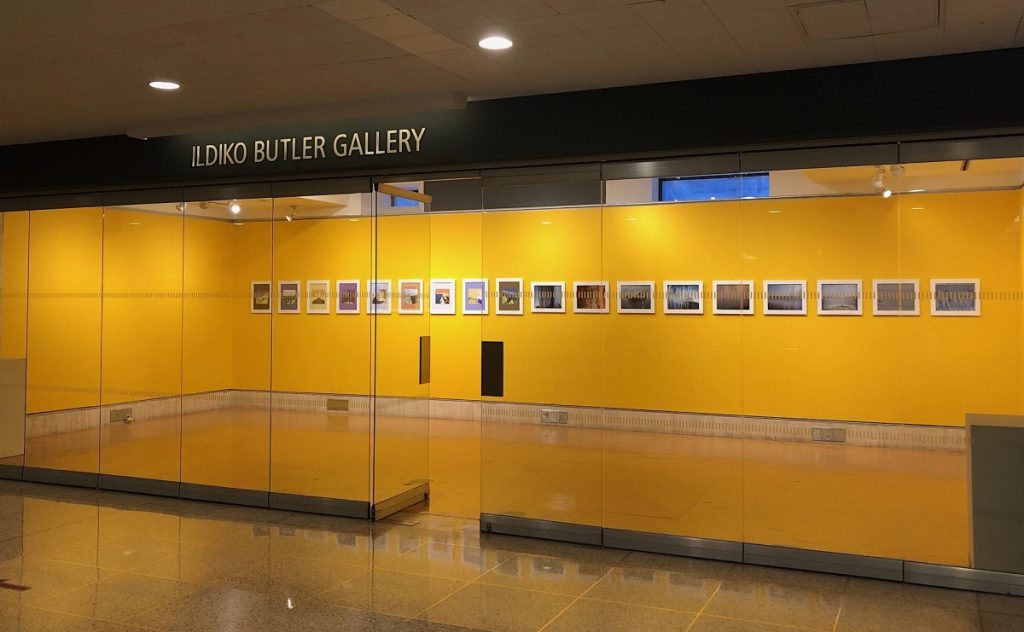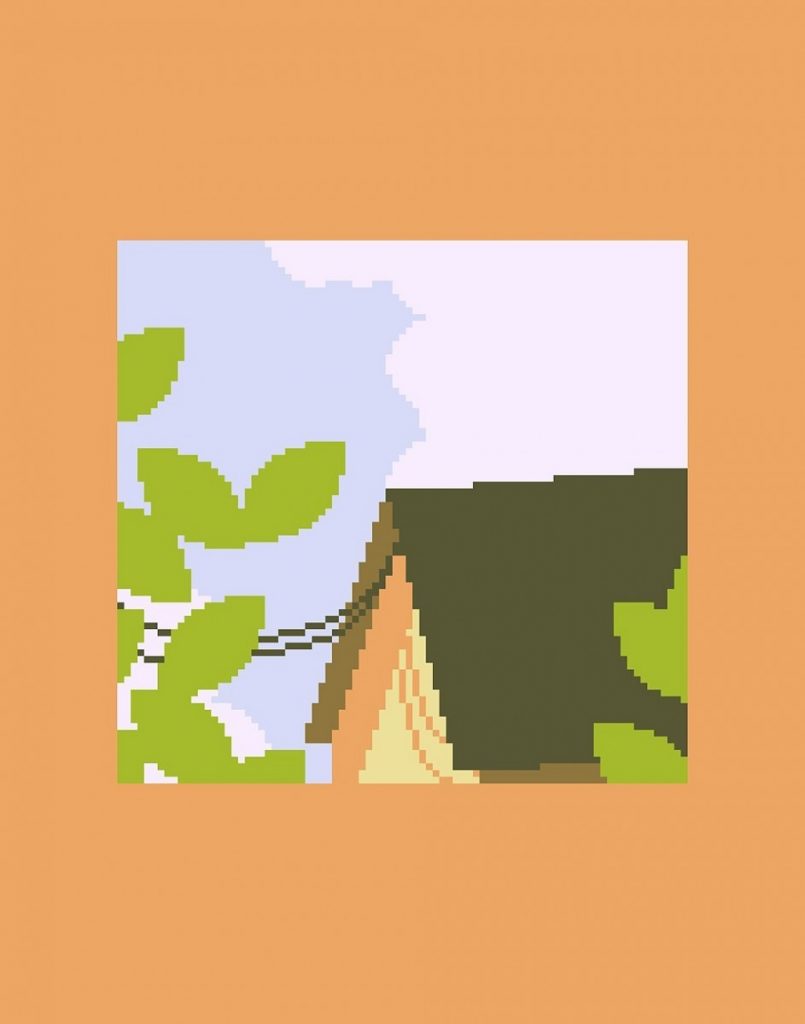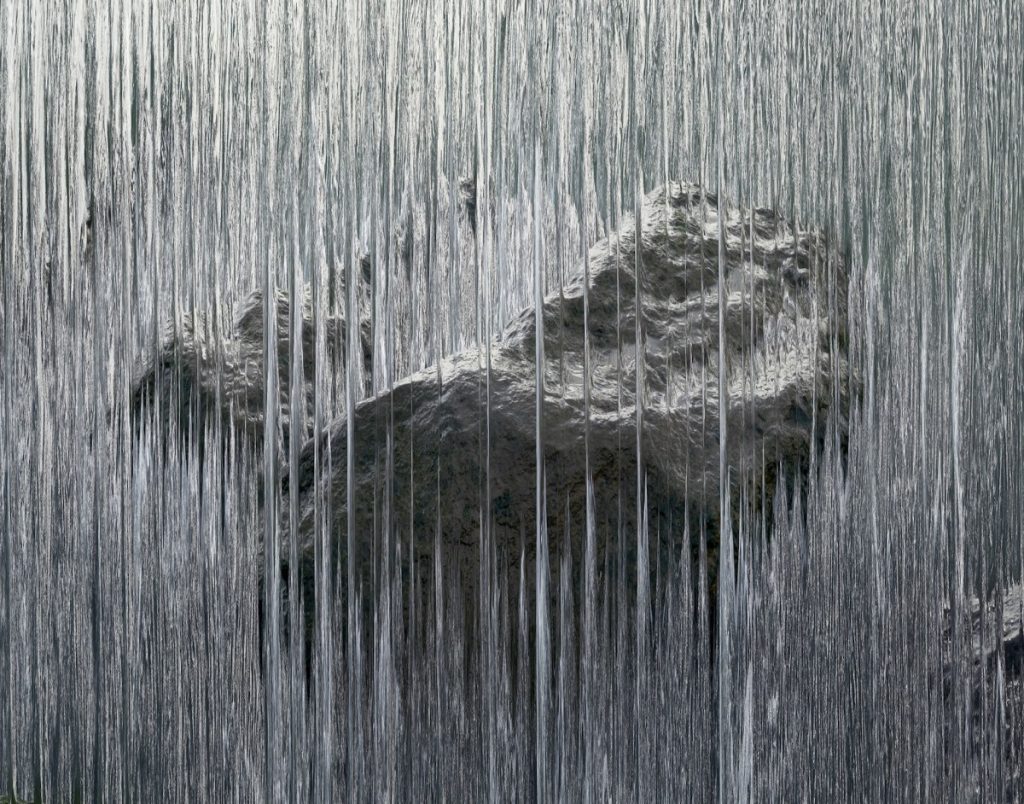Landscape Photographs at the Ildiko Butler Gallery


Landscape Photographs
Featuring work by Gabriel Blankenship and Brian & Gareth McClave
Organized by Stephan Apicella-Hitchcock
Fordham University is proud to present a new exhibition, Landscape Photographs, which brings together work from American artist Gabriel Blankenship and British artists Brian & Gareth McClave. This exhibition’s straightforward title might lead one to presume images that conform to traditional expectations for landscapes—beautiful, transcendent, or sublime; moreover, accessible and understood within the genre’s history. The landscapes depicted here are undoubtedly related to the world we know, although the information is translated and parsed in potentially unfamiliar ways. Both Blankenship and the McClaves observe and take inspiration from the world around us, then process and present their information in carefully managed integers.
With Gabriel Blankenship, we see an array of ordinary suburban rooftops, clouds, powerlines, and foliage with different croppings and color schemes. On the one hand, these views are somewhat general, appearing related to a loose snapshot aesthetic filtered through video game technology. Yet, they are engineered and controlled at the smallest decision-making level, and selectively built up pixel by pixel into iconic images. A tension exists between the extreme control exercised during the image construction and the deceptively casual results. Ultimately, these scenes distill and precisely articulate some of life’s quotidian details.
Brian & Gareth McClave utilize computer technology as Blankenship, though their images are abstract in a different manner. The digital slow-scan software that they developed records a picture over time and presents vertical slices of imagery. We view each image both in its entirety as well as chronologically when moving through the image bands from left to right. What might appear initially as a form of digital interference, or potential file corruption, turns out to be discreet stages in the construction of the image. The increments of a time-based narrative are visible, as well as the event in its entirety.
Gabriel Blankenship
Suburban Roof

Around 2009, I found myself back at home in rural Pennsylvania unexpectedly. I had been studying photography at Fordham, and had grown accustomed to bringing my camera everywhere. At home, I found myself shooting less, despite carrying a camera, and sometimes didn’t bring my camera at all. Allowing myself to be more present was freeing in a way, but not without tension. I kept finding myself wishing I had taken my camera with me, or would catch myself composing a shot, with nothing to record it.
When I returned home, it was to a development its builders had intended to ensure residents’ privacy, despite a very close proximity to each other. The result was instead isolation, and overall detachment from the surrounding community. Neighbors remained strangers, and I instead became familiar with the mid-90s, suburban architecture of their houses, as seen from my third-story bedroom window.
As I began exploring pixel art, I found the same ideas I was drawn to as a photographer cropping up in my work. Moments I thought I had missed were “developing” in 8 and 16 bits. These are “photographs” I wish I had taken.
Bio
Gabriel Blankenship is a multi-disciplinary artist, specializing in photography, installations, and digital works. He studied photography at Fordham University from 2006 to 2009 and started making pixel art as The Pixelsmyth around 2010 on a shared family computer running Windows XP. Drawing inspiration from early personal computer user interface design, and desktop publishing software, he is interested in exploring ways to bring pixel art off the screen, and into physical space. He works both individually and together with Lancaster, Pennsylvania-based collaborative fourhead.
What is pixel art?
While the aesthetics of pixel art are firmly rooted in the low resolution graphics of video games and computer software of the late 20th century, the mechanics are ancient. Using similar principles to mosaic tilework, textile weaving, and embroidery, each pixel is individually placed, economically expressing form, color, and value. Limited memory and processing speeds restricted early video game and computer graphics designers in resolution and palette, leading to works like the simple, tile-based designs of Nintendo’s Super Mario Bros for the NES, and Susan Kare’s approach to the graphical user interface of Apple’s Macintosh. As computing power increased, image resolutions increased, eventually eliminating the technical need for such an efficient design language. Pixel art has maintained popularity through vibrant internet communities, producing work ranging from simple 8-bit compositions, to full photorealistic renderings.
Brian and Gareth McClave
Digital Slow-Scan Photographs

The photographic work of Brian and Gareth McClave represents several years of development of a new photographic process that captures reality in a slow scanning motion across a scene. To do this the brothers developed new software that can take a visual slice through thousands of sequential images of a scene to generate an image that reveals the passing of time as the viewer’s eyes pan across the final photograph from left to right. This is a new twist on the traditional photographic long exposure, whereby the moments of time do not all merge together on top of each other but rather line up in sequence. This offers up the narrative of the scene in the same way as a line of words in a sentence whereby we can gain meaning and insight as we read from left to right across the page.
From a technological perspective the combination of time-lapse photography and digital sampling present a kind of visual encryption of a scene. The image invites the viewer to decode what is presented as a strange, alienating and futuristic environment back into something familiar. The given titles offer clues but no answers. On an aesthetic level the images invoke modernist paintings where individual points of colour, converging perspectives, or drips of paint are collected on the canvas to create an overall effect that distances the viewer from the subject by revealing it in a different light. It is the way that this different light is collected and then redistributed across the print that points to the photographic heritage from which the technique is drawn.
Those images created with a static camera collect the movement of the subject through the frame as each line is triggered, like a Muybridge frame, to capture and reveal an aspect of a scene that might otherwise be missed. This is especially insightful where natural elements such as the movement of the tides are seen to ebb and flow through the course of the day-long exposure and therefore across the duration of the print. On the other hand, when the camera is moving and capturing the landscape through which it passes, the image simultaneously portrays time and distance. This can leave the viewer in a quandary as the constantly changing viewpoint and the constantly changing viewed are combined into a single, sometimes chaotic image. But the chaos suggests or creates something new: a chronographic representation of time that captures the pace and instability of an increasingly mobile age.
In offering a view of a day, or a week, or a year, in a single, but complex, glance, these images allow us to take a step back from the daily densities of our lives and provide an opportunity to lose ourselves in these strange but familiar, calm and cryptic, abstract journeys.
Darren Umney, 2015
Brian and Gareth McClave: Digital Slow-Scan Photographs Website